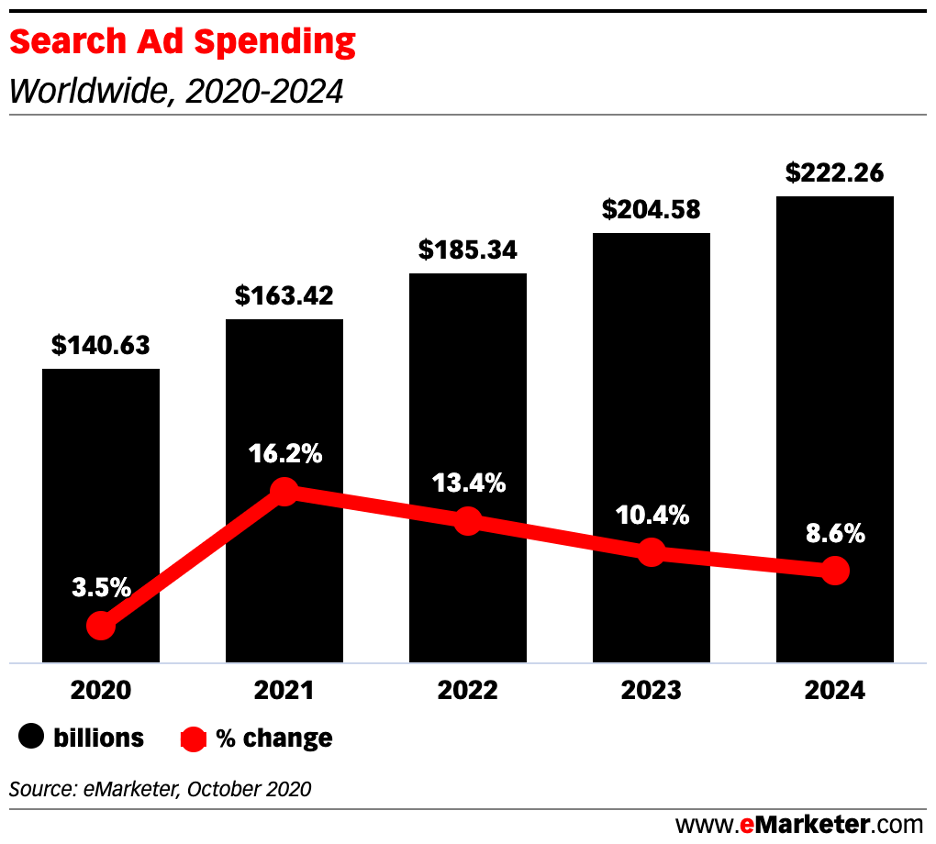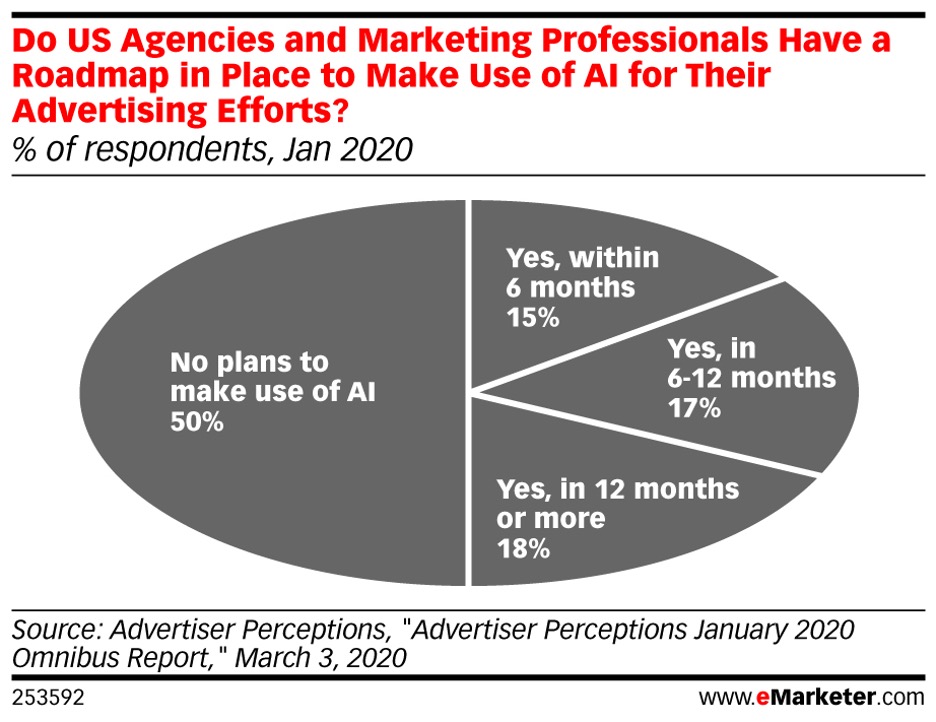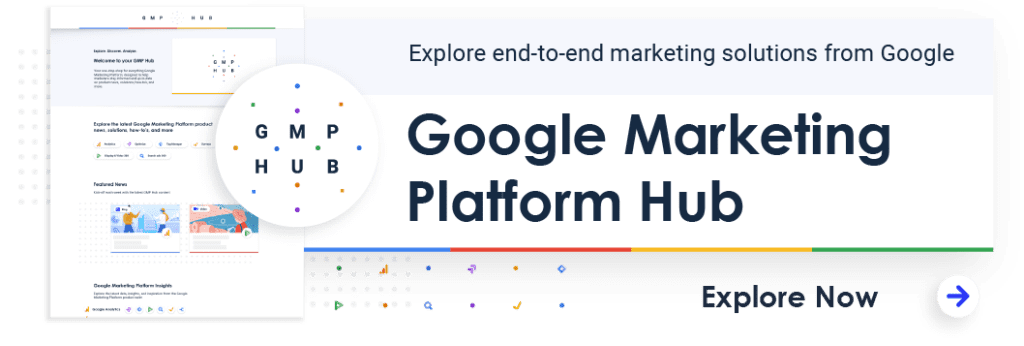Search Ads 360 is a search management platform housed within the Google Marketing Platform suite of products. It helps advertisers effectively and efficiently manage large-scale search marketing campaigns across multiple engines and media channels combined, including paid search, organic search measurement, display, and video advertising.
Google is an innovative company at its core and has always focused on rapid innovation since the inception of its Google Ads platform in 2000. Using keyword-based targeting as a way to measure user intent, Google set an innovative way to buy media online. At the time, the majority of traffic giants were using the CPM model (cost per mile or 1000 impressions), as did Google. It wasn’t long before Google’s competitive nature led to the adoption of a CPC (cost per click) buying model within the Google Ads platform. This happened in 2002, at a time that many advertisers were offering a CPM pricing model.
A big part of adopting this new model was the competitive pressure from Overture (formerly Go To) that offered a CPC model at the time and had shown stronger financial numbers that were outpacing Google’s revenue. Strong financial performance by Overture and a radically different type of model for buying media led Google to change their thinking and adopt the Cost-Per-Click model.
As Overture was acquired by Yahoo, Google’s innovative nature led to a radical idea of introducing the “quality score” as a way to safeguard the overall value of their search results for users and to win over search market share and advertisers. They also found a way to take the CPC model a step further. The introduction of the quality score was designed to reward highly relevant advertisers with higher positions in the search engine at a fraction of a cost. This idea set the precedent for great user experience, which ultimately was a huge success for Google in the years to come.
As many users started coming to the search engine to find answers, they began engaging with advertisers and driving higher ROI to a point that competitors started to take note.
Once traditional advertisers caught onto the trend, they started shifting their marketing budgets away from traditional print media, radio, or other methods and pouring more marketing dollars into contextual advertising with Yahoo, Yandex, Bing, Baidu, and Google as well.
A big part of this adoption also happened because of the introduction of tracking capabilities in the early days of 2005. This roll-out of conversion tracking and unique attribution modeling ushered most advertisers into a new era of advertising. This was the first real attempt to finally understand how much ROI your marketing campaigns were driving on a granular level and at scale.
Fast-forward to today and Google Ads reported over 35 billion dollars in revenue. e-Marketer is reporting that search spending is expected to increase across the board in the next four years.
Looking at the trends of the past and the future it is evident that search spending is going up. This puts a lot of pressure on advertisers all over the globe, particularly in the United States and Canada. They’re now seeing reduced ROI, increased Cost-Per-Click, less revenue, and higher cost per acquisition, not to mention a lack of resources to dedicate to proper account management.

The trend of increased adoption of digital advertising has continued and isn’t likely to slow down anytime soon, so what can advertisers do?
Many performance marketing experts and Google believe Machine Learning technology and automation can help improve performance and fuel growth. So, what can advertisers do to see growth? What platforms can they use to fuel this growth?
Even when it comes to third-party tools, Google dominates in both usage and awareness. 52 percent of the respondents who use third-party platforms (whether alone or alongside native tools) cited Google’s Search Ads 360 as their choice. Kenshoo came in second with 16 percent, followed by Adobe Advertising Cloud with 13 percent. Those were the only platforms to crack 10 percent. At this point, you may be asking yourself why Google Search Ads 360 is not considered a “native tool.” Back in 2007, Google acquired an ad-serving technology company called DoubleClick, who had a search campaign management platform called DART Search. This, in turn, had been acquired from a company called Performics, where it was called Connect Commerce, and had actually grown out of an affiliate marketing platform. Performics then went on to become a digital ad agency as part of the Publicis Groupe. With the acquisition, Google separated the largely self-service native tools within what was then called Google Adwords, and the premium, multi-engine platform that is now known as Google Search Ads 360.
One of the ways tech companies such as Google are helping support advertisers is through its Machine Learning technology built into Google Ads and Search Ads 360. There are distinct capabilities within SA360, so it’s important to understand the fundamental features of SA360 and how this platform can fit into your overall Martech stack.
Why is Search Ads 360 Important?
As advertisers continue to accelerate their digital transformation and adoption of search marketing, the competitive pressure on advertisers will continue to grow in the near future. Increased media costs and lack of resources to hit the desired business outcomes means many advertisers have no choice but to turn to efficiencies in technology today.
Technological advances in AI and Machine Learning are now well-positioned to mitigate a lot of these challenges by solving for different business outcomes, including lowering your Cost-Per-Acquisition, improving ROI, or increasing ROAS in a way that was never done before. Advertisers that have adopted SA360 technology are already reaping the benefits of improved performance to grow their bottom line and enjoy a massive competitive advantage in their market.
Download Now: State of Digital Marketing Report
How you can leverage the top 5 features of Search Ads 360
SA360 has a variety of features and tools that can be used to boost the performance of your search marketing campaigns. It can help reduce time spent managing campaigns and allow you to reach new levels of performance and workflow efficiency, so your team can hit and surpass business KPIs to truly fuel business growth.
1) Unified reporting across paid search, paid social, display & video, and organic channels
To understand the true impact of Search Ads 360 marketing efforts, you have to understand how all users interact with your brand during their purchase journey. Google Marketing Platform as a whole offers unified reporting across different products of the stack and SA360 specifically allows for highly customizable cross-account reporting, allowing you to easily report on both top-level paid advertising, per search engine and individual campaign level performance.
In addition to that, you can combine SA360 performance data and bring that into other products of the Google Marketing Platform, like Campaign Manager reporting. This is where you can start to dissect the customer journey to gauge the true impact of your campaigns across the different channels in your marketing mix.
More powerful features for advertisers include real-time, de-duplicated, and cross-account data that gives advertisers clear insights on keyword attribution, so you can pinpoint which keywords are driving performance and how you can reallocate your budget to maximize your ROAS.
2) Centralizing operational efficiencies in one platform
Google accounts for a large percentage of daily search volume from users across South America, North America, and EMEA markets, and as a result a majority of advertisers often ignore opportunities on Microsoft Ads (formerly Bing Ads). Often, because Bing as a search engine doesn’t hold as big of a market share, a lot of advertisers tend to overlook the importance of optimizing their digital campaign on Microsoft Ads, either because they lack resources or don’t spend enough on Microsoft Ads. This sometimes means Microsoft Ads accounts tend to only be optimized on occasion as Google Ads gets the lion’s share of attention due to its search volume.
With Search Ads 360, you can implement an ad campaign and roll it out across all connected search engines using the simple sync feature. Once you connect Microsoft Ads, Yahoo Gemini, or Yandex to SA360 you can push changes across these platforms to different degrees relatively quickly using the sync feature. This amounts to a lot of time saved.
On top of that, one of the main features within SA360 is that all connected engines like Google Ads, Microsoft Ads, Yahoo Gemini, Baidu, and Yandex can all enjoy Auction Time Bidding or Smart Bidding, even if it isn’t available on the native engine directly. Smart bidding in SA360 leverages the power of Machine Learning designed by Google and thus allows you to take automated bidding in Google Ads or other search platforms a step further by giving the SA360 platform multiple targets to optimize towards.
3) Automated bidding that leverages the full power of Machine Learning
Search Ads 360’s Smart Bidding feature uses machine learning to analyze the performance of your ad campaigns. The Smart Bidding feature can automate keyword bids to improve your campaign performance across all connected search engines. Using SA360 (over individual platforms) ensures a unified approach across all your connected accounts.
Auction-Time Bidding (ATB) to supercharge your campaign performance
One of the superior features of Search Ads 360 is the auction-time bidding that uses machine learning to set bids at the time of auction. The system analyzes user intent as well as signals across a variety of factors including the following:
- Device, browser or operating system
- Language and events
- Keyword semantics and intent
- Audience lists like RLSA
- Geographical targets
- Time of day or day of the week,
- Price competitiveness
- Ad characteristics
- Existing Google signals like user’s browsing history and audience type combined with auction signals
These adjustments all happen alongside your account and conversion history and adjust bids appropriately as you look to optimize bids towards predetermined goals such as:
- ROAS (Return on Advertising Spend)
- CPA (Cost-Per-Acquisition)
- ROI (Return on Investment)
- ERS (Estimated Revenue Share)
- Revenue or
- Combination of some of these like ROAS and ERS
Forecasting performance using bid strategy forecasts
Search Ads 360’s bid strategy forecasting uses historical campaign data to project the forecasted performance of your bid strategies, with the ability to look at:
- Conversions
- Revenue
- CPA
- ERS
- ROAS targets
4) Budget management to track your pacing with ease
Another defining feature of Search Ads 360’s budget management tool allows you to seamlessly plan and manage your campaigns’ budgets. You can use this feature to quickly create a budget plan for a week or a month. The budget planning feature also incorporates the goals you want to achieve, what timeframe you want to achieve them in, and how much budget you want to allocate across your engines or campaigns. Search Ads 360 will then use historical data to estimate spend and performance and will allow you to review the campaigns against these forecasts. This allows advertisers to adjust bids as needed to stay within budget and hit the desired KPIs.
5) Enhanced Conversion Tracking
Search Ads 360 uses its native Floodlight tags to track conversions, which can be utilized across the suite of products by all Google Marketing Platform tools, including Campaign Manager 360 and Display and Video 360. This means SA360 can track conversions from both display and video advertising, paid search, and organic channels. This helps to prevent double-counting conversions of cross-channel conversions as it paints a more accurate picture of channel performance. This way you can get better insights from your digital analytics and re-allocate your marketing budgets more appropriately to scale your campaigns faster.
Closing
Future-proofing your marketing budgets and protecting your brand performance from increasing competitive pressure is simple when you have powerful technology in place to help you achieve your goals. It’s important to consider the different features of Machine Learning in SA360 and how Smart Bidding can help you dramatically improve the performance of your campaigns. If you’re looking to learn more in-depth about SA360 you can visit the Google support page Judging from market trends it is clear this trend is not going away and based on the survey from eMarketer it is quite clear that adoption of Machine Learning is well underway. If you’re looking to maintain a competitive edge or even get ahead of your competitors SA360 can be your competitive advantage in a crowded space of performance marketing today.

To learn more about how you can optimize your performance marketing strategy check out our SA360 services page and set up a strategy call with one of our experts today!














